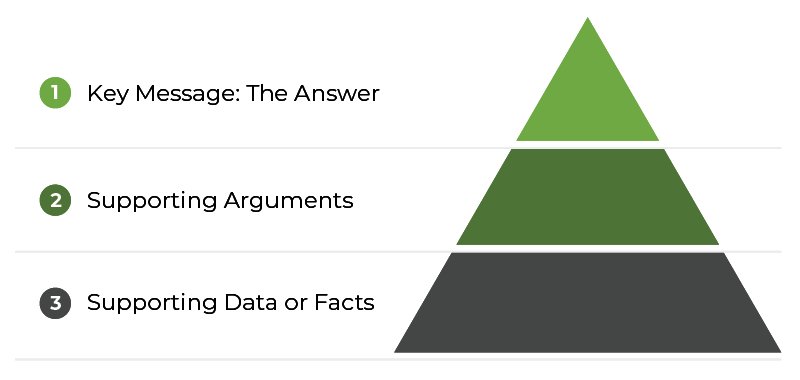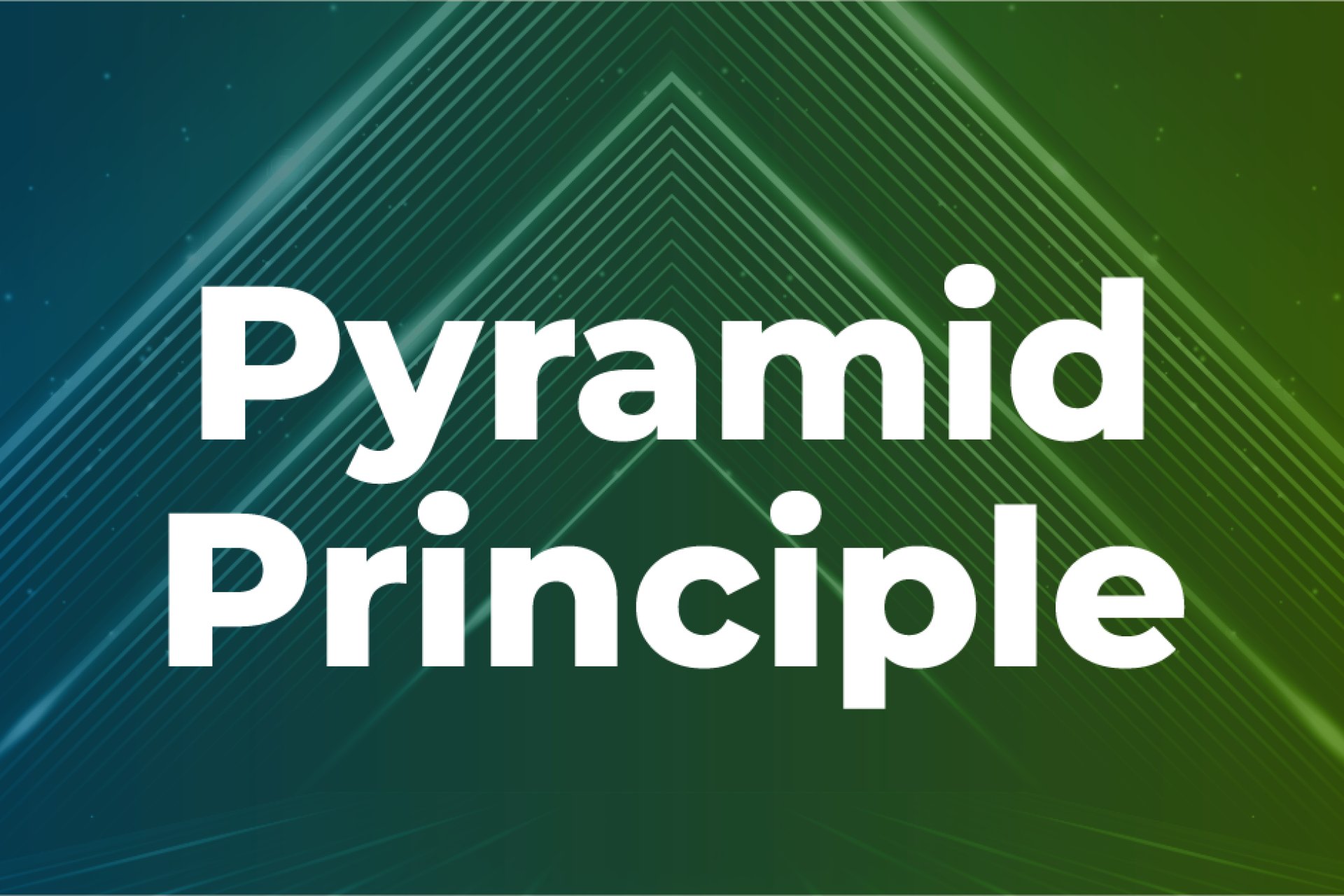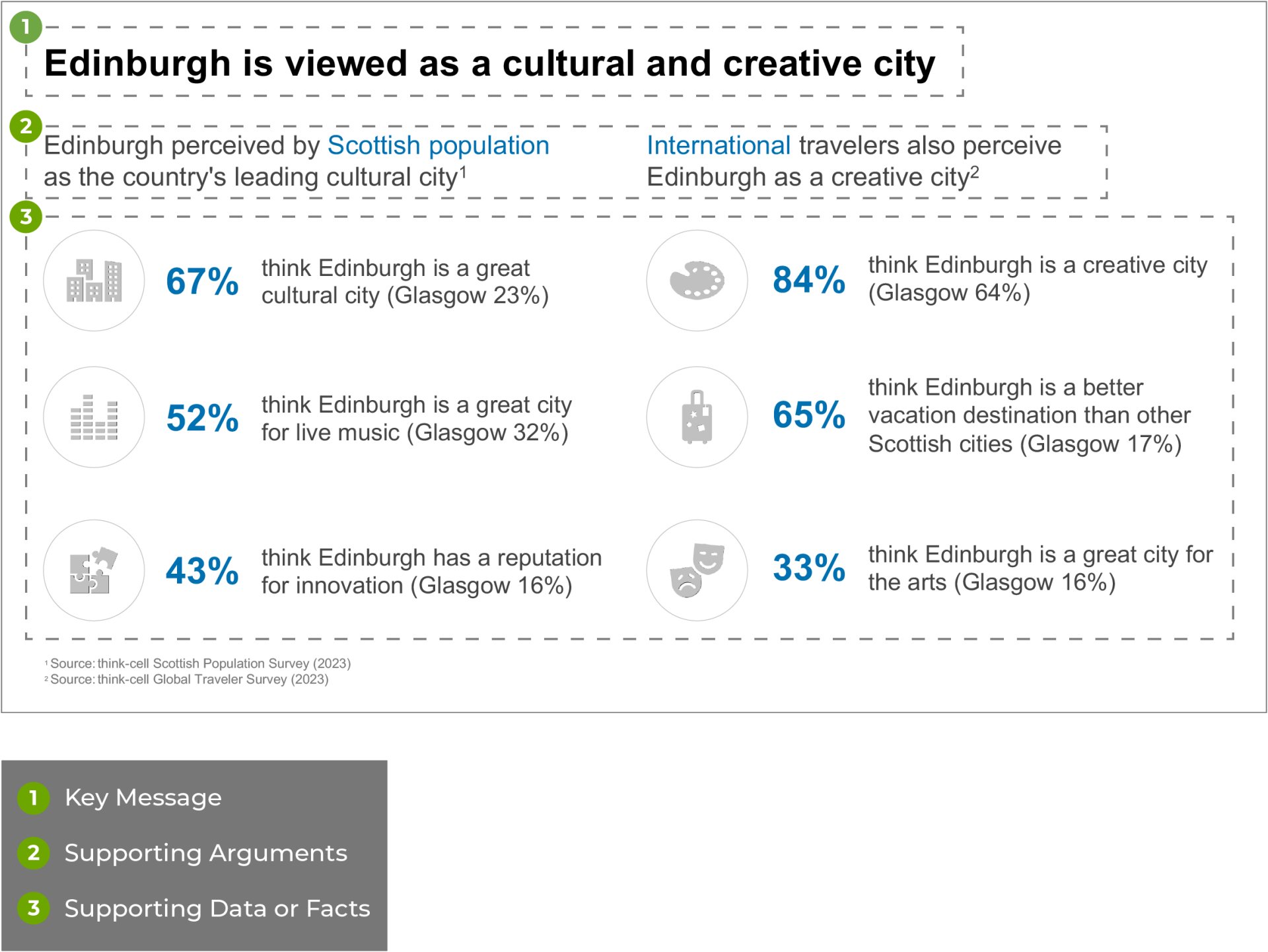Using the Pyramid Principle to build better PowerPoint presentations
6 min read
When you have an important PowerPoint presentation to give and a lot of information to cover, it can be difficult to know where to start. Whether it’s a monthly report, pitch deck, or research findings, you need to craft a clear and simple message without losing the essential details. What’s more, you need to do it in a way that grabs—and keeps—your audience’s attention.
So where should PowerPoint users begin when starting with a blank slide deck, and how can you structure your presentation for maximum impact?
The answer is by using the Pyramid Principle, a method for improving clarity of communications created by former McKinsey consultant Barbara Minto. Minto spent decades training McKinsey recruits on how to use this technique, eventually publishing her work in her book, The Pyramid Principle.
While you can apply this principle to any type of communication, this article focuses on its use in PowerPoint presentations. Here you’ll get a basic overview of how the Pyramid Principle works, key strategies for structuring your deck and tips for creating more effective slides and presentations.
What is the Pyramid Principle?
The Pyramid Principle focuses on presenting your top-level conclusion first, followed by supporting arguments, data and facts. The ideas presented can be mapped out as a hierarchy, with the level of detail increasing as you move down the pyramid.

Why you should use the Pyramid Principle in Your PowerPoint presentations
Most people tend to present ideas in a bottom-up fashion. That is, you start by presenting all of your facts and arguments, ending with your conclusion. However, presenting your conclusion first and then delving into the detail is more effective for several reasons:
- Starting from a high level and moving into greater detail makes it easier for your audiences to understand your story or argument
- Business leaders think from a big-picture perspective, and generally want to know the solution before digging into the data behind it
- If you start with your conclusion, it serves as a reference point or north star and you are less likely to lose the thread of your story
Structuring your introduction
Your presentation introduction, typically represented by an executive summary slide, is the top of the pyramid and should include your key conclusion or recommendation. Crafting this executive summary first can help you organize the body of your presentation.
Your executive summary slide should include three key elements:
- Situation: Start with a self-sufficient and uncontroversial statement on the topic which the reader can automatically understand and agree with.
- Complication: What is the change or problem you will address? In other words, you want to answer the question, “Who cares?”
- Resolution: This is the main point you’re trying to make. Here you may also summarize your main supporting arguments to help orient your audience to where your presentation is going.
These elements mirror classic storytelling principles, providing a structure the brain already recognizes. Here’s an example of what this might look like in practice:
|
Situation |
For decades, China has been considered the factory of the world |
|
Complication |
Today, rising labor costs and supply chain challenges are leading companies to seek new manufacturing bases in other Asian countries |
|
Resolution |
Acme Company should evaluate new suppliers in Vietnam, Bangladesh and Malaysia as cost-effective alternatives to manufacturing locations in China |
Organizing your supporting thoughts
Your supporting thoughts should form the middle of the pyramid, sequencing your main arguments in logical order. According to Minto, there are four ways to order your ideas:
- Deductively, as in presenting the premises of an argument
- Chronologically, for example a month-by-month comparison
- Structurally, for instance comparing business performance in several different locations
- Comparatively, or in order of importance
Each main argument raises the question of why, which you then answer with supporting data and facts. Every level of the pyramid should summarize the details that follow, with the points presented at each level grouped into consistent categories.
As you lay out your supporting thoughts, each slide should have just one message supported by one action title. You can even outline your presentation starting with your action titles and then fill in supporting facts and data.
Understanding the MECE Principle
The MECE Principle is a strategy for organizing information in a way that is Mutually Exclusive and Collectively Exhaustive (MECE) and helps you adhere to the Pyramid Principle. In other words, all points are covered and grouped logically without overlap.
Let’s look at a visual example to illustrate.
Example 1: Microsoft products and services
The above provides a basic overview of Microsoft products and services. In theory, all products and services would fall into these categories. You could then further break down each type of product or service into specific products or services, for example Microsoft 365, Microsoft Surface, Xbox and Azure.
When applying MECE to the Pyramid Principle, each level of the pyramid can use the MECE principle to ensure insights and ideas are grouped such that they are distinct and easy to comprehend.
Presenting data and facts
PowerPoint users should also apply the Pyramid Principle to slides comprised of data and facts. Here the title represents the most important takeaway from your data, as opposed to presenting standalone data without context. You can then list key arguments, with your data providing the evidence that supports them.
Here’s an example of what this type of slide might look like:
Example 2: Slide with pyramid messaging structure
When it comes to data slides, it’s important to present data in a way that highlights your main point. PowerPoint add-ins like think-cell can help you quickly create sophisticated charts that you can easily adjust to emphasize the key point. Not only does this help get your message across more effectively, but it also lets you focus more on refining your argument than struggling to build a good chart.
Ultimately, using the Pyramid Principle is akin to starting at a 10,000-foot view, circling down into ever greater levels of detail. Using this principle to present your conclusion, sequence your arguments and support them with facts helps your audience better digest your message and avoid confusion. Moreover, it can help you make polished slide decks faster with less stress, helping you present with confidence for a better result overall.
Download your free PowerPoint Best Practices eBook for an in-depth guide to creating more effective presentations.
Sources:
- Barbara Minto, The Pyramid Principle
- PowerPoint Best Practices eBook (think-cell)
- Slide Science, Mastering The Pyramid Principle to Structure Your Slide Deck
- CNBC, China, ‘factory of the world,’ is losing more of its manufacturing and export dominance, latest data shows
Read more:
How to apply the MECE principle to PowerPoint presentations
Learn about the MECE principle and examples of how to apply it, plus how to use it to create stronger PowerPoint presentations faster.
May 17, 2023 | 11 min read
7 steps to building a compelling PowerPoint presentation
Learn the 7 steps to build an effective PowerPoint presentation, including how to structure your story, lay out slides and create clearer, more impactful charts.
— by Amos WongJune 12, 2023 | 7 min read




